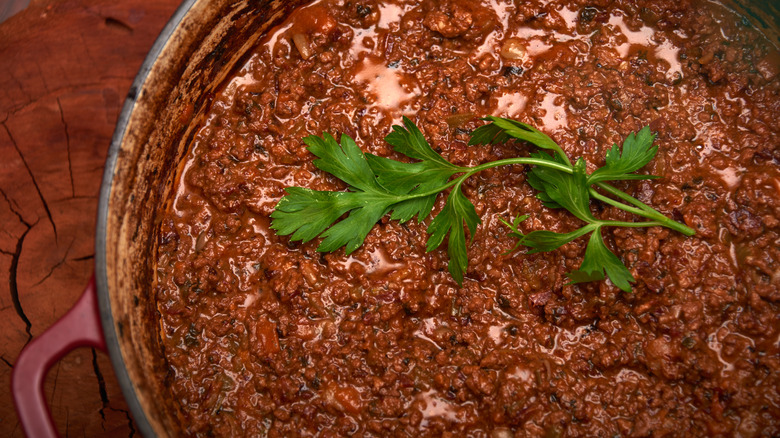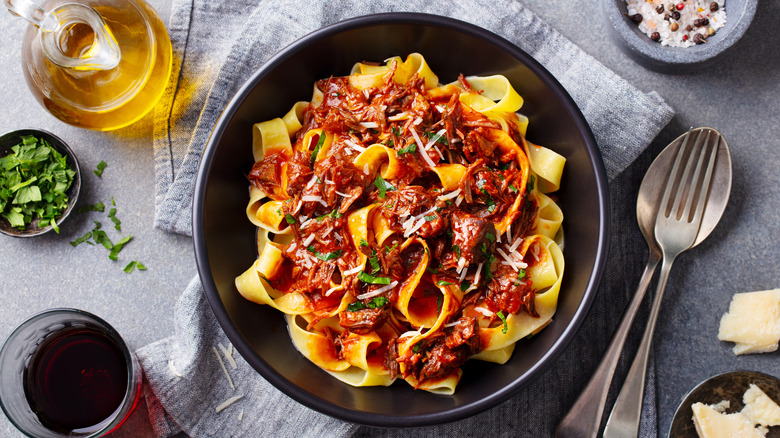Is Ragù Actually An Italian Dish?
Among the grand, expansive tradition of Italian food, certain dishes stand out not just as delicious but as culturally significant. Think the Neapolitan pizza, lasagne, or tiramisu — arguably a perfect dessert. Standing proud among them is ragù, an immensely important but often misunderstood dish that forms a foundational pillar of Italian cooking.
You might know it as "bolognese," though this is something of a misnomer. Bologna has its own variation on ragù, but it's only one of a whole host of regional versions of the dish found throughout Italy and doesn't much resemble what we might think of as a "bolognese" sauce. In fact, its true name, ragù, reveals a fascinating history that asks a borderline sacramental question (at least to Italians): Is ragù even an Italian dish at all?
The answer is yes, but not originally. To find out why, we need to understand what a ragù is in the first place. It's not a dish, really, but a broader category denoting a meat-based sauce that has been slow cooked and is usually (but not always) served with pasta. The popular Bolognese ragù is the most famous variation, but others include the iconic Venetian duck ragù or ragù alla Barese from the south, which often uses lamb or even horse meat in place of beef and pork.
The French origins of ragù
The Italian ragù was, according to legend, invented in Bologna by Alberto Alvisi, then chef to the Cardinal of Imola. But, this recipe was in fact an Italian spin on a French dish: ragoût, a similar slow-cooked dish of meat and vegetables that was brought to Italy by the armies of Napoleon in the 18th century. The Italian aristocracy of the time became obsessed with French culture and, consequently, French food.
Though Alvisi's original recipe made with minced meat and cinnamon is a far cry from the French version, it represented a new type of Italian ragoût that was distinct from the hearty stews that had long been a part of Italian food. That dish then grew into the Italian icon it is over time, with the name eventually being changed to the more Italian "ragù." The inclusion of the accent on the "u" is a nod to the dish's origins and retains the original pronunciation.
The ragoût in its original French form (a meaty stew served as a main course or with sides, such as rice and polenta) still exists today and is commonly served in more refined settings in Italy and in French restaurants the world over. Ragù, meanwhile, has defined itself as a dish that is both complex and approachable, refined and casual — most likely the reason it has become so beloved — and, importantly, truly Italian.


